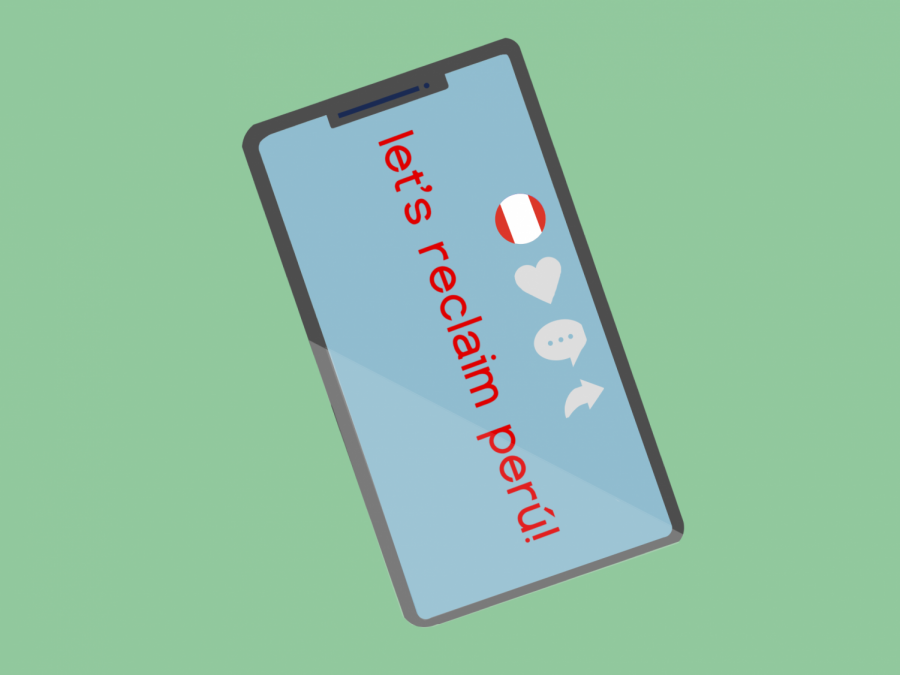Peru’s Powerful Youth
This November, Peru’s youth took to the streets to protest the removal of President Vizcarra. But, rather than seeing this as just “another protest,” we must recognize the significance of how this movement was largely youth-organized, and how older generations can take a page out of Gen Z’s book.
January 8, 2021
#merinonoesmipresidente (Merino is not my president) was a popular hashtag among Perú’s Gen Z and Millennial population who were fed up with the rampant corruption in Perú’s government. In November, Peruvian citizens were protesting the removal of President Martin Vizcarra and installing of President Manuel Merino via underhanded and immoral means. The strength of these protests can be traced back to Perú’s most youth citizens, a generation not to be messed with.
Perú’s politics has been a whirlwind since November 9 when President Martín Vizcarra, a popular president with an anti-corruption agenda, was impeached by Congress due to “moral incapacity,” an old law meant to apply to mental disability, a law that did not at all pertain to Vizcarra. This removal was regarded as a coup, which angered and surprised many Peruvians. From there, Manuel Merino, the head of Congress that impeached Vizcarra, was inaugurated as the interim president on November 10. This move caused Peruvian citizens of various ages to peacefully take to the streets where there were clashes between officials and civilians; two people died, and dozens were injured.
Vizcarra, in reply to these protests, expressed that “it’s like going back to the past, to traditional politics. The people have given Mr. Merino their answer.” From the pressure of these protests, Merino resigned on November 15, and three days later, Francisco Sagasti was inaugurated. Peruvians celebrated as Merino left office, a victory especially for the young people of Perú.
While Vizcarra wholeheartedly recognized how powerful the voices of the people were, he was off about one thing: nothing about what happened was traditional. The youth of Perú, not older generations, were the ones driving the pro-democracy protests. And they’re a force to be reckoned with. According to NBC News, 40% of those in the mandatory voting age are 20-34, and of those 18-24, more than half said they participated in the protests. The young people have numbers on their side.
On top of this, accessibility to iPhones and social media has changed the game. There were no visible leaders as one may have seen in the Civil Rights Movement with MLK and Malcom X. Protests had been coordinated using Facebook and TikTok, and hashtags such as #semetieronconlageneracionequivocada (they messed with the wrong generation) were trending. Generally leaderless movements seem to be the trend in today’s age of connectivity. The group is their own leader. The ability to have a camera everywhere someone goes has allowed for anyone to be a reporter. The government cannot cover up a moment if most people there have recordings–at least not easily. The strength of this generation can truly be seen with Merino’s resignation less than six days after he became president. A dependence on technology has been seen as Gen Z’s vice, but in the end, technology is one advantage they have against those who are unjust.
Rather than shaming younger generations for how technology has altered their lifestyles, older generations could learn something from these youth. Gen Z is already getting back on their feet to fight for justice again–a battle has certainly been won, but the war is not over for them. Peru’s Congress is incredibly corrupt, with 68 of the 130 members being investigated for activities ranging from fraud to homicide. According to Hugo Ñopo, a researcher at think-tank Grade, and Alexandra Ames, a political analyst in Lima, the law currently allows anyone to run for Congress regardless of criminal records, grants lawmakers immunity from prosecution, and lets businesses buy influence over politics. My hope is that Gen Z and Millenials will be the ones to continue to step up in the face of this injustice. It is clear: it is time for change, and the youth may be the ones to spark another revolution.


